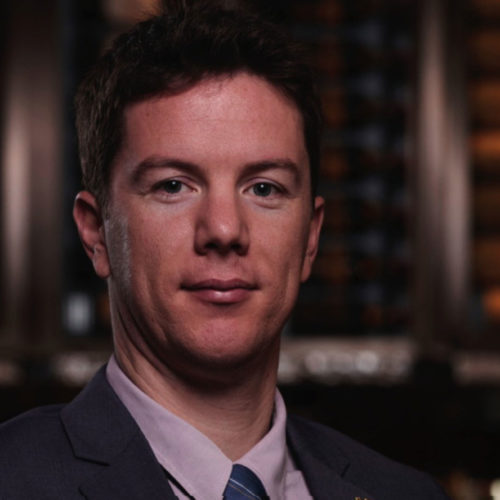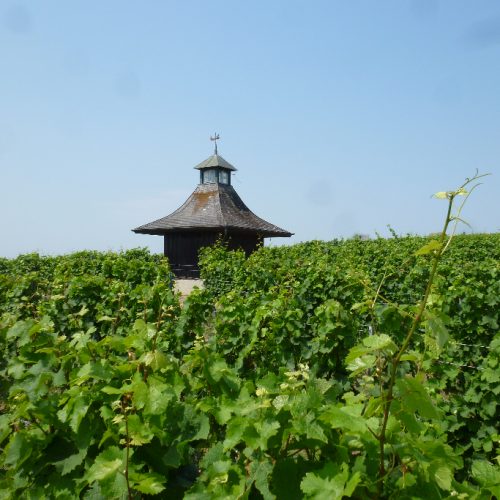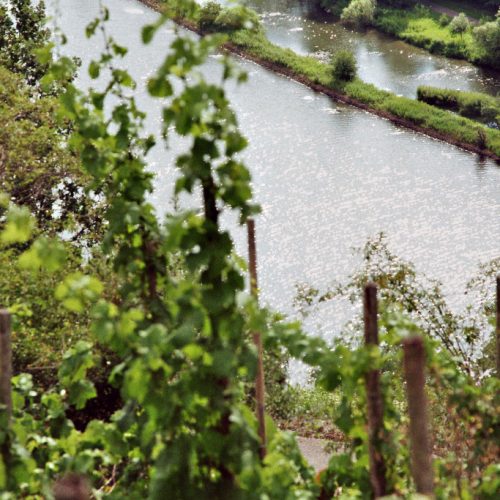THE WINES
VDP, Erste Lage, Engehöller Bernstein „S“, Riesling, 2014, Trocken
When you here this name, you could think: Infernally narrow! That is correct for those who are used to flat locations. Because the side valley of the Rhine near the district Enghöll offers a tight valley, which offers pretty good conditions for a consistent vegetation period on slate soils. That is very good for this wine. Slender, aromatic notes of elderberry and peach are surrounded by a tight, mineral corset of taste. It is a contrast that seems harmonious and it also leaves an exciting impression on the palate.
VDP, Grosses Gewächs, Oberweseler Oelsberg, Riesling, 2014 Trocken
Brevity is the source of wit. No. Here, the source has to be length. This wine lives the spice. This spice has an effect from the first drop on the palate with a long echo. The relationship between juicy fruit and and harmonious sourness turn into a incredible and intense variety. That is the expression for the special location of the Oelsberg. Here ends a soil displacement, which brought new red sandstone into the soil layers at the top. You can see how good Jörg Lanius understood this location and he brings the special things into the glass.
VDP, Gutswein, Lanius-Knab, 2014, Feinherb
Reduction on the point. This fine embodies the good base or the fundament of the good work in all predicates, also in the lower pyramid. Fruit and minerality are standing against each other and nudge each other. A comfortable silence, that the wine carries, is dominating. Harmony in compliance with elegance. No loud noises, breathe deeply. Enjoying. Slowing down.
VDP, Große Lage, Engehöller Bernstein Riesling Edelsüß, Auslese, 2013
Buckle up. Here comes a noble sweet wine with a wonderful concentration. A taste excursion in the field of tension of sweetness and sourness. In the middle mineral notes and a light touch of honey. Balance impresses while the interaction, it is a great compensation of sweetness and sourness. Concentrated, more concentrated, selection heaven.
THE INTERVIEW
Your website and your current YouTube film are also available in Chinese. So that must be a market where you see growing potential. Why is that the case?
We have many Chinese guests, who visit our vineyard. Our wines are also available in China. In contrast to the usual opinion, that the Chinese only like sweet wines, it is the dry ones that are most loved there.
So do you think that the Chinese like dry wines more in general?
China is a very big country. I cannot give a general answer. But I believe that the wealthy part of the population is orientated rather to the West. That is the reason why this part tends to choose dry wines instead. If some sort of sweet wine, then it must be in the noble sweet area, like Trockenbeerenauslese, berry selection and ice wine.
There are many approaches and ways of working for wine. Some people want constancy and the same quality levels. It is their goal to bring different terroirs and vintages into the bottle. Tell us something about your philosophy!
That there is inconstancy, lies in the nature of the thing. Wine simply is a natural product. There does not always have to be the same taste, because the years are not the same. It is a product of nature because its stylistic changes from year to year. The characteristics of the terroir is always part of the wine, even though it might not be in the same stylistic. It is not the task to create the same taste every year. Everyone has to decide on their own, if you should be defining wine as a cultural drink in that way. If your looking for something special, you are not going to be happy if you find the same stylistic again and again. And it is also always about the cultural landscape as well. It only makes sense, if you can taste it in the glass.
So it is about authentic „steep-vineyard-taste“?
Yes, it is about bringing the special features of the steep vineyard into the bottle and to be able to taste it. It is not only about a technically perfect wine. That is what we want to achieve. And not only for our „Große Gewächse“, but for all our wines. Different locations, different stylistics. Bernstein has the mineral touch, and the slate domination. The location Goldemund is more fruity and the Oelsberg is rather the spicy one.
From the event „Asian Kitchen and German Wine“ that has been organized by the German Wine Institute we still remember the connection between Asian dishes and your wine. It was the Bernstein Riesling late vintage from 2012. What do you like to eat with that wine?
Yes, Asian kitchen fits very well to this wine. But classic dishes work too. For example, wild boar stew. This wine with its fruity and sweet components and the meat that is also a bit sweet, turn this combination into a great experience. This wine also fits very nicely to tomatoes. Although tomatoes do not fit to any wine, because the sourness does not work with each other. And a residually sweet late vintage wine can balance that out easily.
Tradition has to prove and it has to open up for the context of modernity many times. What way are you going to fulfil tradition and modernity?
We are mostly growing Riesling with about 92%, but also some Pinot Noir. Pinot Noir has an old tradition here in Oberwiesel and it has been grown since many years. That is because of the ground. Partially, we do have some heavy clay soil in the middle terrace of the Rhine and that is where the Burgundy wine is traditionally standing. We are fermenting very modern and professionally in a stainless steel tank in the cellar and we try to take the maturing potential of the wood as well. Tradition and modernity are close to each other when it comes to marketing as well. We designed a wine house within the historical house. Our motto: Harmony and conformity.
You, or better to say your wife, created an advertising campaign that makes promotion for water-repellent textiles for the region. Why are you agitating so much for your region?
It is our home. It is the most classical wine region of Germany. And that is being picked up in general for marketing of Germany: The castle Pfalzgrafenstein and the castle Gutenfels. Unfortunately, the region is not very big and so it is not shown like any other, bigger region. It is time for that to be changed. As well as that, the money for wine advertisement are connected to the area of the growing region and so there is not much left for the wine budget of the Middle Rhine. So what is the solution for that? Do it yourself. That is why we designed the Middle Rhine material and had it produced.
And why water-repellent textiles? Is there so much rain in your region?
(Laughing). No, it was just about being practical. Robust and easy-care. Made in Germany.
The label of the house shows horseman and quadriga. What stands behind that?
The Romans have been in this region over 2000 years ago. The Lanius probably has Roman origin. But that is not for sure, because there used to be a phase in the Middle Ages where names were romanticised. And like that, the name Quadriga fits perfectly.
Brand images turn louder and brighter. Are you following that trend or are you rather staying constant?
We make changes again and again. And that, as I said, in small steps that try to adjust to modernity.
Wine-growing needs strength and endurance. What do you have to relax?
That, what most winemakers love. Good food. And also to explore other regions, not necessarily wine-growing regions. You should go through the world with open eyes and know what happens in it, besides wine.
What is your perfect wine moment?
I only have that one the vineyard. To sit on the vineyard on a nice summer evening with a good bottle of wine and some cheese. That is when the world seems alright.

















